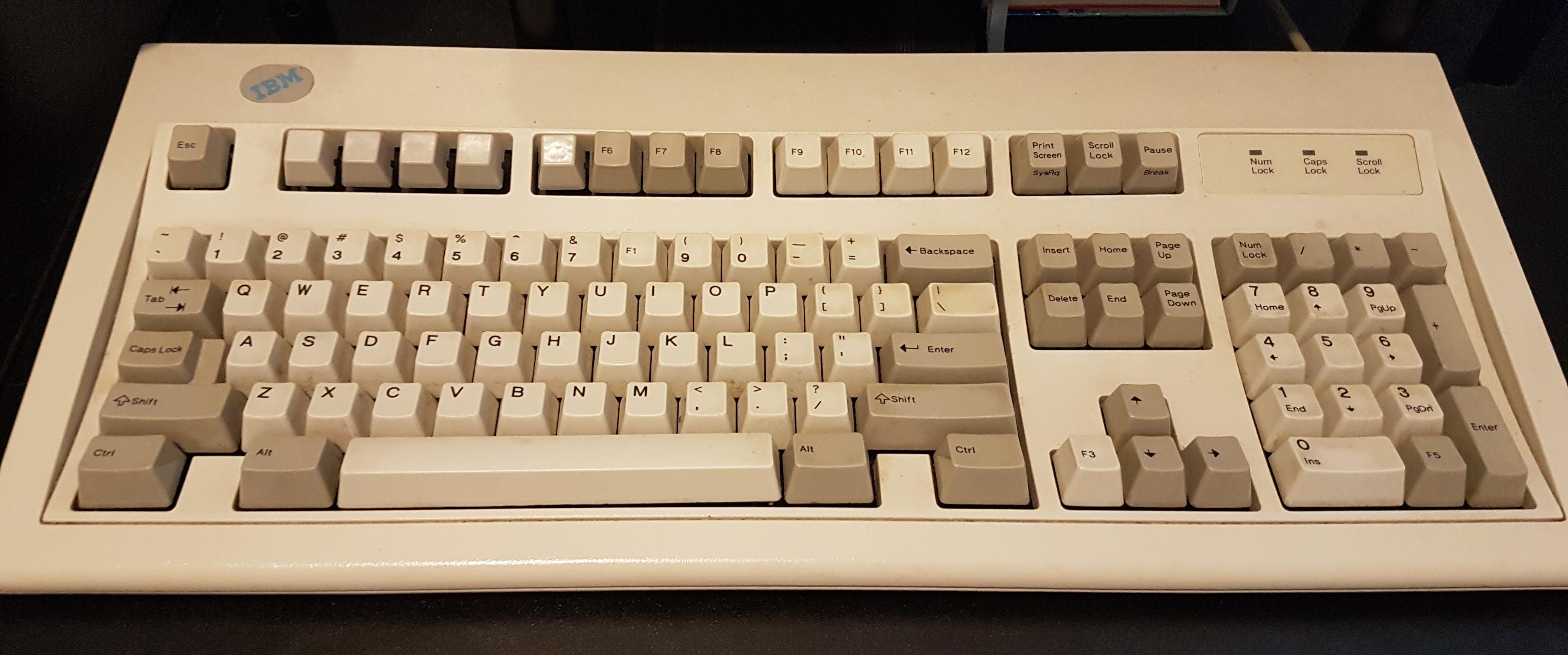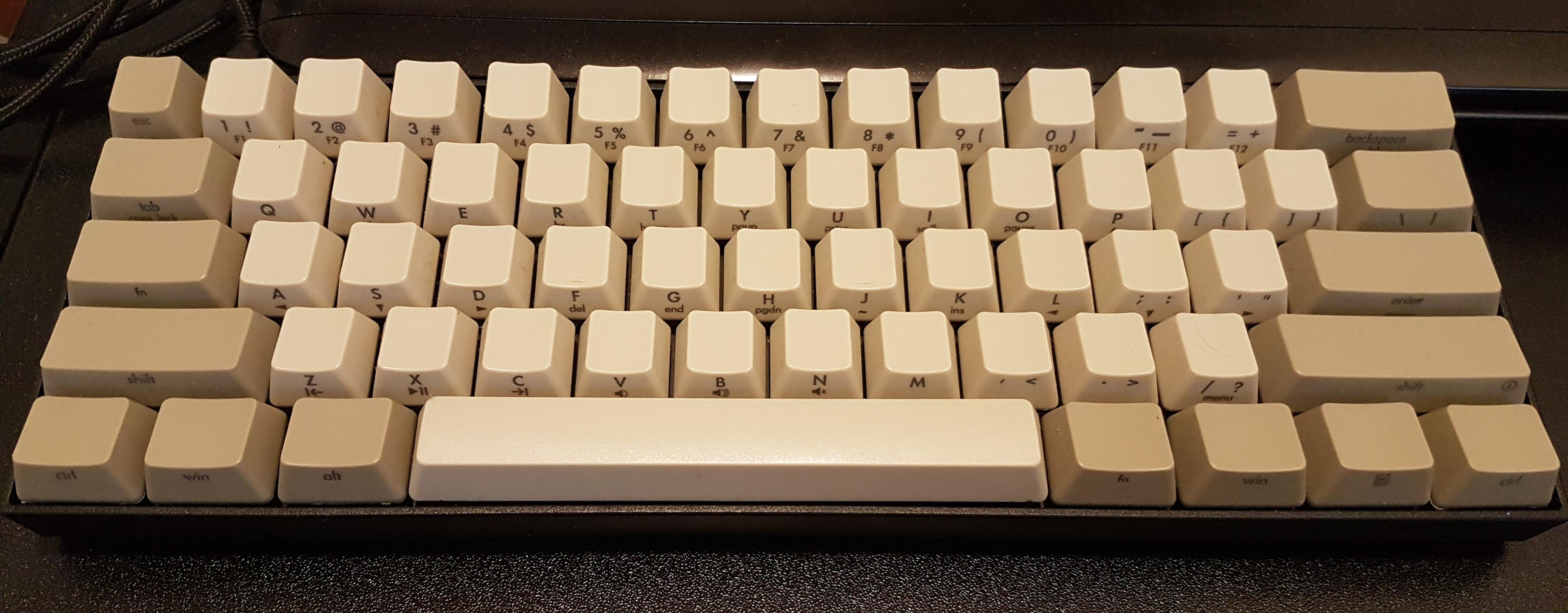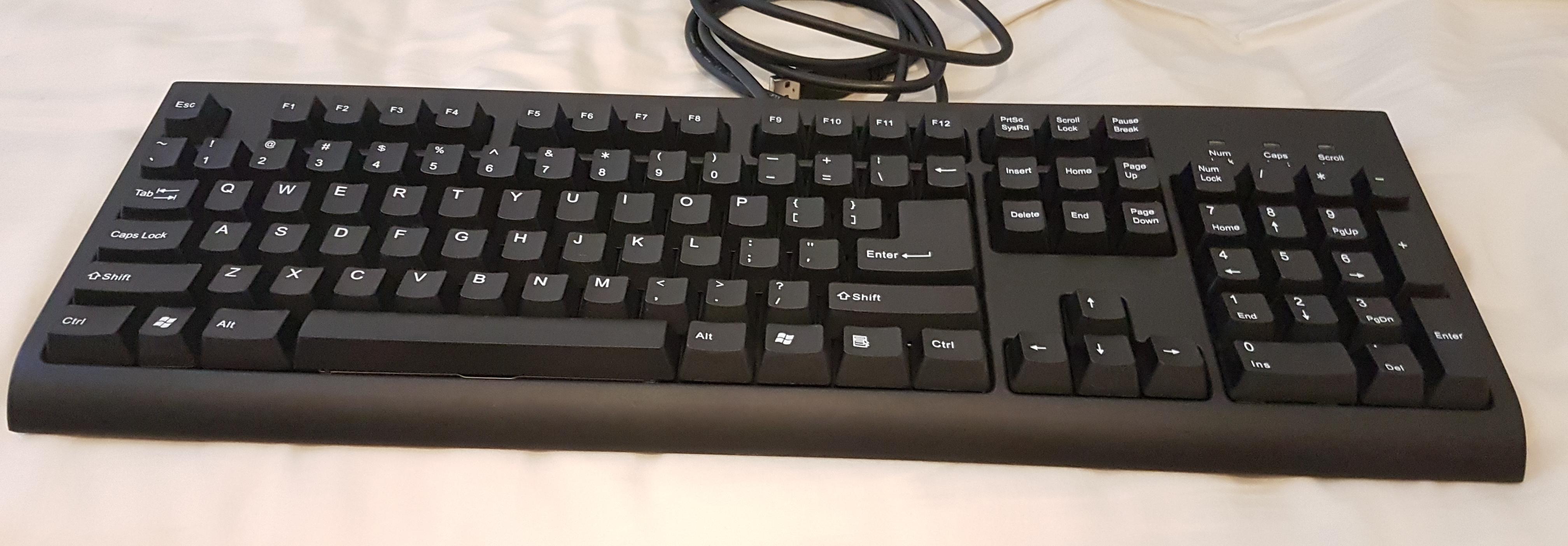

Manufactured by Lexmark in 1995. Uses buckling spring switches over a membrane. I got this keyboard in 2017, and I have no intention of ever selling it. This keyboard is always plugged into my desktop (via PS/2 sowrap early it kinda has to be always there). People often say that the IBM Model M is not a very good keyboard for playing games because of its 2 key rollover (though in practicality it's more of a "mostly 3 to 4 key rollover, but with the rare 2KRO"). However, I've never had an issue during my years of playing Counter-Strike, Project Reality, and Red Orchestra 2. The only games I won't play on with my Model M are certain rhythm games like Stepmania. Again, this isn't because of the 2KRO, but because I've noticed I have higher accuracy on my other keyboards.
I've since given this specific keyboard to a friend. Thankfully, I'll eventually have buckling springs again when my reproduction Model F keyboard arrives.

60% keyboard that usually stays in my backpack with my laptop. Has Matias Quiet Click switches (modern day Alps switches) which are the best "silent" switches in terms of tactility in my opinion. The switch is often criticized for key chattering. I've replaced a few of the switches on my keyboard, and none of the replacement switches I ordered had any issues. The rumor is that older switches were over lubricated. If you get this keyboard in particular (or any other keyboard with dampened switches), please remember to lubricate your metal stabilizer bars if there are any. Those will often be louder than your key switches!

Solidtek was (maybe is?) a keyboard manufacturer mostly known for making point of sale boards, but they did put out a normal typing keyboard using simplified white Alps switches (Alps SKBM White). This board features an Asian keyboard layout, featuring the big Asian (often called "big-ass") enter key and small, single unit backspace key. I don't really like typing on this keyboard only because of the small backspace. Far too often I'll reach over to hit backspace and end up with a backslash. I mostly use this keyboard for playing osu and Stepmania. If I ever end up going to a LAN and need to bring over a keyboard, this would probably be the one though, unless I really want to lug over a Model M on top of all the other gear I need to bring.

Unknown manufacture date. Later production model with Alps SKCM Salmon switches. Very unceremoniously named the Apple Standard Keyboard, the M0116 was the keyboard designed for the Macintosh II and Macintosh SE. Vintage Apple keyboards had a lot of interesting stuff going on with them, but most people probably remember them for their amazing vintage Alps switches. The early models of the M0116 came with Alps SKCM Orange switches, while the latter production models came with Alps SKCM Salmon switches. Both are highly regarded tactile switches, so you really can't go wrong with either (though I do tend to see people slightly skewed in favor of Orange over Salmon, though I prefer Salmon). Unlike the rest of the keyboard (yes, even weird button, which is actually supposed to be a power button for your computer), the Caps Lock key uses the Alps SKCL Lock switch. Unlike most keyswitches, SKCL Lock switches will lock into place when depressed and will remain depressed via a latching mechanism until it is pressed again. Definitely a handy way of indicating whether Caps Lock is on or not if your keyboard design does not have an LED indicator light.
Besides the switches, vintage Apple keyboards are noteworthy for their use of the Apple Desktop Bus (ADB) protocol over the more common PS/2 protocol created by IBM. The main cool thing ADB can do is daisy chain multiple peripherals through one port on your computer. For example, you could plug your keyboard into your computer, and then plug your mouse into your keyboard.
In terms of keyboard layout, you may notice that certain keycaps are of non-standard size, such as the single unit wide "option" key and the "small-ass" enter key. Even more astute observers may notice that I've moved around a few keycaps as well. I'm currently using the Drakware ADB2USB converter to use this keyboard on a modern computer, and have taken advantage of the keymapping functionality to make this keyboard a little more useable in a modern context. I've taken the liberty of moving around the arrow keys to be vim-style, which actually worked out a lot better than I thought it would have. The Caps Lock key is used as a layer toggle switch that allows me to turn the numeric row into the function row. The equals sign key on the numpad is set to backslash/pipe. I've also swapped the grave/tilde key with the backslash/pipe key. The grave/tilde key, now sitting next to the arrow keys, is actually mapped to grave/tilde. The backslash/pipe key is mapped to Left Alt to match how "option" is CTRL and Apple/Command is Meta. Finally, the power button is set to Print Screen just because I didn't have anything else to put there.